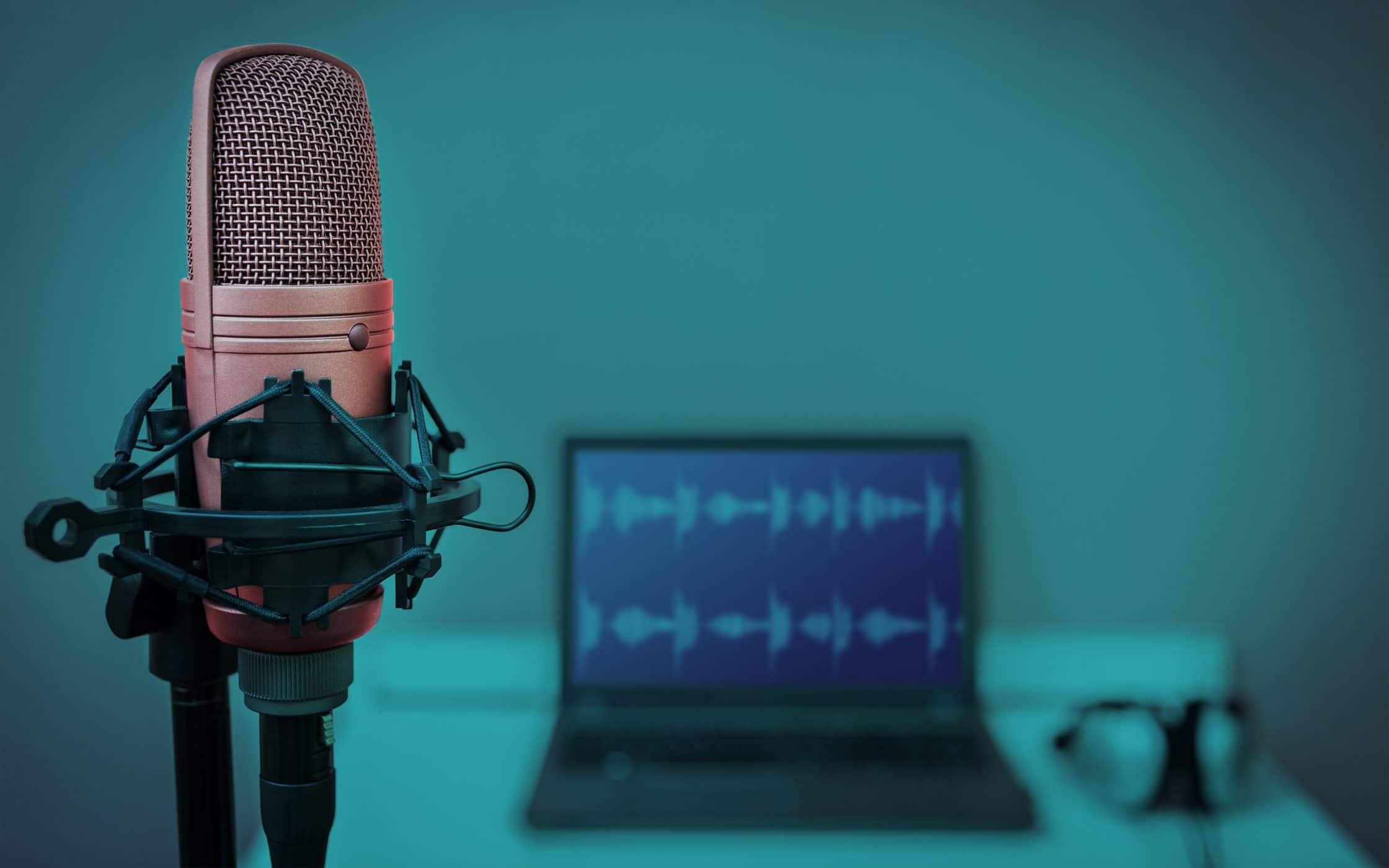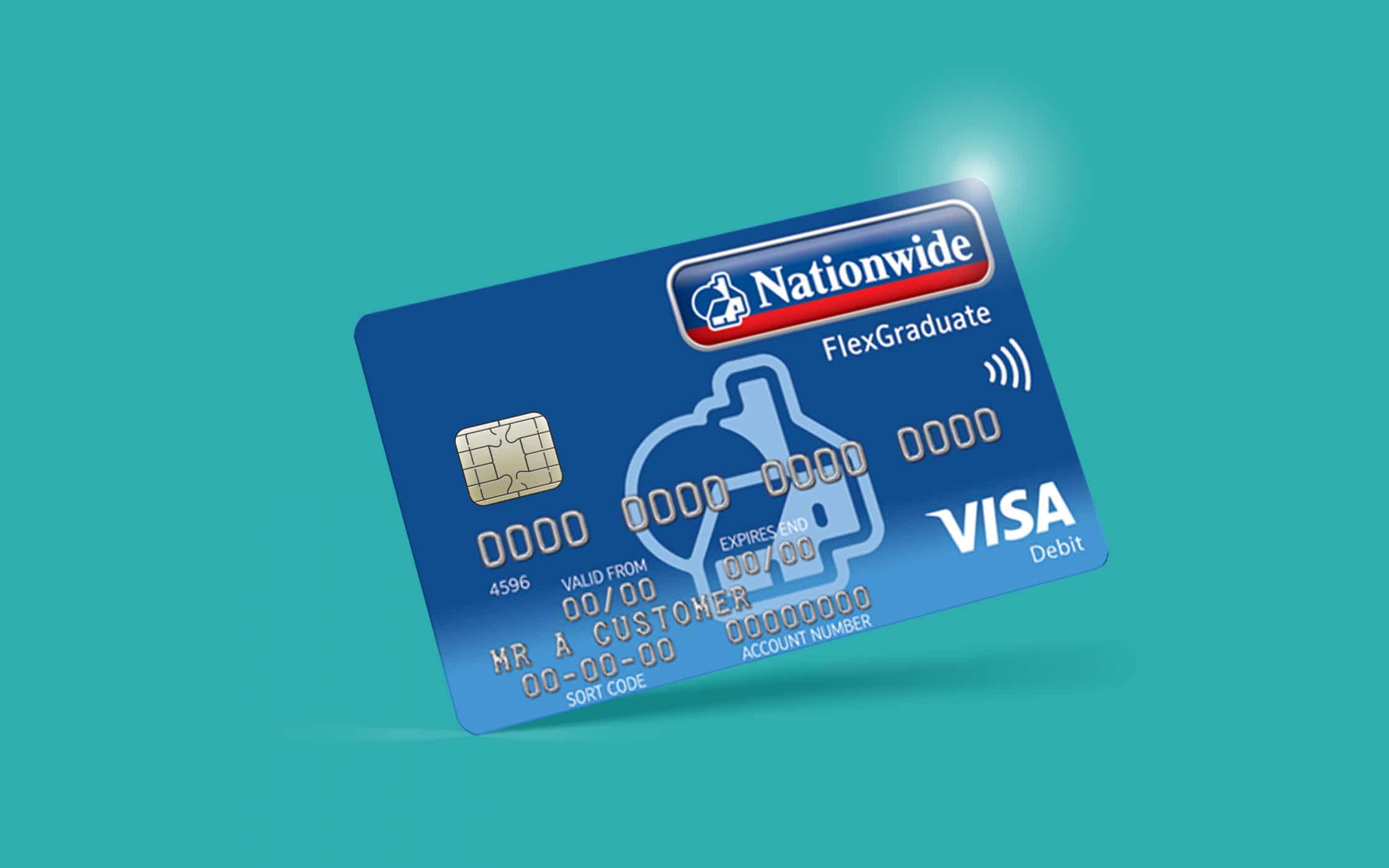Your guide to sonic branding: A sound strategy for business growth

In a crowded marketplace packed full of new ideas, innovative products, and exciting companies, branding is more important than ever.
For most marketers and business owners, the easiest way to imagine a brand is by visualising logos, specific colours, and even popular marketing materials. However, there’s more to a company than how it looks. Sonic branding is about making sure that your organisation is ‘heard’, as well as seen.
Building a brand with sounds and music that aligns perfectly with your brand attributes is an incredible way to give your identity greater depth. After all, if you’ve ever felt the beats of a power ballad in your heart, or felt the hair rise on the back of your neck listening to your favourite music, you’ll know how evocative sound can be.
The power of sound transcends culture, language, and even the visual world. With sonic branding, companies connect with their customers on a different level. Anywhere in the world, someone can hear the tune of the “I’m Lovin’ It” and think of McDonald’s, without a single word being spoken.
While the process of distilling your brand into a few notes of sound can be challenging, it pays off. Your sonic logo can be just as recognisable as any other component of your brand. What’s more, it gives you a way to reach customers who are barely paying attention.
So, how do you create a sound strategy for sonic branding?

Ready for a tune-up? What is sonic branding?
Let’s start our audio adventure with a basic sonic branding definition.
We’re living in a world surrounded by sound. Whether it’s the little tune your smartphone plays when you turn it on, or the alarm that plays to wake you up in the morning, we all spend our lives doused in noise. Every second of the day, we’re consuming a sound cocktail filled with hums, beeps, and melodies – and we don’t need to be actively listening to absorb the message.
It only takes around 0.146 seconds for human beings to react to sound. We automatically experience an emotional response whenever we hear certain tunes. The beeping at a checkout counter lets us know our transactions are going through smoothly. The click when you lock your car door lets you know that you’re safe.
Ultimately, every moment in our lives is affected by sound and music. Sonic branding is your opportunity to be part of the symphony of the modern world.
Otherwise known as ‘sound branding’, sonic branding refers to the sound of your brand. Specifically, unlike audio branding which refers to all the noises that your company creates, sonic branding refers to the creation of a single jingle or ‘sonic logo’ that represents your company.
If you think you’ve never heard a sonic logo before, think again. A sonic logo sounds like this for Windows, or this for McDonald’s, or even this for Nokia.
Though these tones sound like basic mnemonics at first, they carry huge amounts of emotional weight for your company. The right tune in your sonic branding helps to set the foundation of every interaction customers have with your business.

The benefits of working with sonic branding companies
A compelling sound, just like the right logo or graphics, sets your brand apart.
Sound enhances recall, evokes emotion, and strengthens affinity with customers by appealing to different senses. Of course, the wrong sound can either come across as unrecognisable noise, or worse – lead to the wrong feelings about your company.
Sonic branding companies are experts in working with audio. Through careful considerations of brand identity and image, a sonic branding organisation can help you to find your business sound. Whether it’s the Coca-Cola soundscape of fizzes and satisfied sounds, or the droplet sound introducing TED talks.
Sonic logos must be meticulously crafted to represent a brand just as clearly as their visual counterparts. They work because they’re designed to help customers form implicit associations with a company in their minds. Working with sonic branding companies to create your sonic logo leads to:
1. Greater attention for your brand
Sonic branding helps to capture the attention of your audience and build brand recognition. In an environment plagued by information overload, attention is perhaps your brand’s scarcest asset. Adding a sound to your brand identity can help you to get the focus you need. Additionally, sound can penetrate your customer’s subconscious even when they’re not really listening. While a visual logo requires someone to pay attention, a sonic logo flows through the mind regardless of where their focus might be.
2. Stronger loyalty
Sound triggers emotional responses far better than visuals. If you’ve ever tried watching a horror movie with the sound on mute, you’ll find that you don’t get scared anywhere near as often. On the other hand, just listening to a spooky sound can be enough to set your skin on edge. With sound, you can use emotion to tap into the loyalty and commitment of your target audience. You just need the right sonic logo.
3. Better brand recall
You don’t just want your customers to know your company; you want them to remember it too. There are plenty of brand assets that can help with that, including your brand photography and logo. However, according to studies, listening to sound or a piece of music can initiate the memory section of your customer’s brain, leading to better brand recall.
4. Conveying purpose and value
Because sonic branding resonates with your customers on a more emotional level, it can be a great way to convey your values and brand purpose. Music is emotive, and it has a way of communicating complex ideas in a way that’s easier for your clients to understand. The right sonic logo or audio identity can express what you stand for as a company and help you to deliver a clearer message about what you want to bring to your audience.
5. Boosting your personality
Sound, as an emotional vehicle, can humanise your digital presence and make it more appealing to your customers. Today, we rely heavily on websites and social media to communicate with customers. Unfortunately, while digital media is convenient, it lacks much of the personal nature of in-person interactions. Since people react faster to sound than any other media, the right sonic identity could help to give greater depth to your online personality, so you don’t appear as just another characterless corporation.
6. Enhance engagement and experience
Music and sound can be powerful tools for encouraging people to engage with your brand. A fun sound or jingle stays in someone’s mind. Have you ever found yourself singing or humming along to a company’s sonic logo without realising it? A sound can even become a viral phenomenon or a meme in today’s socially-driven online space.

How to create your sonic logo: Top tips for success
As mentioned above, when most people think of logos, they think of visual assets.
While your visual logo is an important component of what makes your company different, a sonic logo can help to take your company to the next level.
Your sonic logo serves a similar purpose to a standard brand icon. It appears whenever you have a chance to connect with your customers through audio media. For instance, you’d play your sonic logo at the beginning and end of a podcast or logo. You might add it to your live streams and broadcasts on social media or put it in your television ads.
The question is, how do you create a sonic identity that speaks on behalf of your brand? What can you do to make sure that your customers hear the right message from your sonic logo?
1. Conduct a sonic branding audit
Before you can figure out where you need to go with your sonic identity, you need to determine where you are. A sonic brand is just like a standard brand. Whether you’re actively building your image or not, the chances are that you already have the beginnings of an audio identity out there. Whether it’s the music that you play in the background of your podcasts, or the words you say at the end of every video blog.
Check through your brand and content assets for any signs of a sonic logo or identity. Build on your existing knowledge of the music and sounds that resonate with your brand and ask yourself how you would distil the essence of your company into a few seconds of sound.
2. Keep your sonic logo simple
It’s easy to get overwhelmed by the various elements of logo design. When you want your audio identity to be as clear and obvious as possible, you might end up going a little over the top with the sounds you create. However, the best thing you can do is keep your sound as clean as simple as possible.
Look back in time at some of the best sonic branding examples throughout history. Think about Twentieth Century Fox’s audio logo or the lion roar from MGM, one thing most of the best sonic identities have in common is that they’re not songs or jingles with catchy lyrics – they’re tones that customers can recognise within an instant. Try to create a sonic logo that doesn’t rely on words. Instead, find a musical mnemonic that elicits a specific feeling from your target audience. Remember, a couple of seconds should be more than enough to get the right response.
3. Focus on triggering emotions
As mentioned above, your sonic logo needs to make your customers feel something. Although sonic branding is still a widely underused technique in marketing, there’s still way too much sound in the world. Your customers don’t want your company to be another source of meaningless noise. With sonic branding, your focus is your logo or tagline – the thing that’s going to accompany your traditional logo whenever possible.
Work with your sonic branding agency to create a sound that conveys the right feeling from your customers. Imagine the digital bleeps of the Intel logo that conveys a sense of innovation and simplicity. Consider the ‘whoosh’ sound you hear on an Apple device when you send an email – helping you to feel relaxed and confident that your communications are getting through.

4. Don’t use sounds that already exist
Since emotional resonance is so critical for a strong sonic branding strategy, it’s easy to see why many companies try to simply take ownership of sounds that already make them feel a certain way. Unfortunately, you can’t copyright a sound like a locking door, and many familiar tunes are already owned by other companies.
Even if you could use someone else’s sounds, your aim as a brand should be to stand out from your competition, not borrow their sonic logos. Choose a sound that helps to highlight your position in the marketplace and remind customers of how unique you are.
5. Don’t give up
Whether your sonic branding strategy leads to the creation of a jingle, or you just want a basic sound like the ‘Intel Inside’ noise, it’s important not to lose sight of your vision. Creating an iconic sound isn’t easy, and it takes time for the tune you develop to start resonating with your audience.
Remember that every brand has a soundtrack, no matter whether you’re working on yours with a sonic branding agency, or your customers are creating it for you. Building the sonic aspect of your brand is just like developing any other component of your identity. It takes time, focus, and perseverance.
Sonic branding examples: Sounds to study
We get so caught up in the visual aspects of the world that it’s easy to overlook our other senses.
However, whether you realise it or not, sounds are already an important factor in how people think and feel about companies. Companies like IBM, Intel, and even State Farm have been using sonic logos to help customers understand and remember the identities they’re trying to create for their companies. You might even have a sonic logo rumbling around in your brain right now.
Here are just a few sonic branding examples most likely to ring a bell.
1. Sonic branding examples: The Nokia tune
Most sonic logos are composed specifically for commercials and marketing strategies. For instance, many companies use their sonic identity in their podcasts and videos. However, there are other examples of sonic branding out there that have emerged naturally over time. For example, the Nokia ringtone is something that an entire generation now associates with their mobile phone.

In fact, Nokia’s sonic logos are so pervasive in UK culture, that they’ve become a common part of many movies, television series, and more. A simple ringtone allowed Nokia to market itself through multiple forms of media, all without ever having to draw obvious attention to its products.
2. Sonic branding examples: Nationwide
A sonic branding strategy doesn’t have to be musical to be a success. Sometimes, just a reassuring voice is enough to tell your customers everything they need to know about your brand. Just look at Nationwide, and its “Nationwide is on your side” jingle.

The Nationwide sonic logo has been around for more than 50 years now, and it’s still just as powerful as it was several decades ago. The relaxing sound of the rhyme is perfect for a banking and insurance company that wants to convey peace of mind to its audience.
3. Sonic branding examples: T-Mobile
Another great example of a very basic, but highly evocative sonic logo is the T Mobile jingle. There are no words involved in the T-Mobile sound, and yet that simple selection of notes is enough to illustrate a feeling of joy and community.

The high-pitched chimes in the T-Mobile score were created to evoke excitement and happy emotions. It’s a tune that’s easy to remember, and something that’s stayed with T-Mobile for several years now – becoming an inherent part of its identity.
4. Sonic branding examples: Green giant
Want your kids to eat their vegetables? Why not tell them that their sweetcorn comes to them thanks to the help of a happy green giant? The Green Giant brand has been around since 1928 – meaning that it’s coming up to almost a century of success in the food industry.

To avoid scaring children with the idea of a giant vegetable man, the company behind the brand decided to add the “Ho, ho, ho” laughter at the end of the jingle to elicit fun ideas of characters like Santa Claus. Additionally, the green giant song includes a gentle voice and fun, jaunty notes to make it more compelling.
5. Sonic branding examples: Hastings Direct
Finally, one of the most basic, but well-known sonic logos in the UK must be the ‘Hastings Direct’ jingle. After a few years in the media spotlight, starting in 2005, the Hastings tune spelling out the number to call if you want to talk about insurance, is something that lingers in the heads of consumers country-wide.
There probably isn’t a single person in England that won’t be able to finish your sentence for you if you approach them and say, “Oh eight-hundred double O-.” In fact, I’d bet that you probably finished the jingle in your head while reading this if you’re from the UK.
Amplify your brand with a sonic branding agency
At this point, you should have a good idea of why sonic branding is such a valuable addition to your marketing and branding strategy.
However, if you’re still feeling unsure, let’s dive a little deeper with our sonic branding definition, and look at the science behind sound.
First of all, around 3 new startups launch every second. That means a new logo, a new set of brand colours and a host of marketing materials poured out into the online world. While you’ll need to invest in similar strategies to boost your company’s reach, it’s worth considering the often-underestimated options too – specifically sonic branding.
Studies demonstrate that the biggest decisions are made in the ‘limbic system’ – the non-rational part of your brain. Coincidently, the limbic system also happens to be the portion of your brain that reacts to sound or music.
According to the Audio Branding Congress, and Harvard Business Review, strategic sonic logos can help companies to make their brands more identifiable. Customers recognise your business much faster when they have sounds and music to associate with your venture. Additionally, the 2017 Sonic Logo Index discovered that brands can easily convey emotions by choosing the right sounds for their marketing measures.
Science shows us that sonic branding is an important element in building emotional connections with your target audience. However, sound isn’t only valuable for emotional marketing reasons. Aside from the obvious connections that companies can build with their sonic identity, a good sonic logo is also essential for a world that’s moving progressively towards more sound-based interactions.
The rise of things like smart speakers and audio search mean that consumers are relying more on sound and audio to help them engage with the branded world around them. If you’re not part of the audio revolution, then you could be one of the companies that end up getting left behind.
Of course, creating a sonic branding strategy for your business is easier said than done. Marketers can’t just throw together a few notes and hope for the best. They need a sonic branding agency and a little insight too. That’s where Fabrik comes in. Contact us today to find out more about creating your sonic brand.
If you enjoyed this article, you might enjoy these too:
—Take note of audio branding for marketing success
—Now, entertain us! The benefits of branded content











